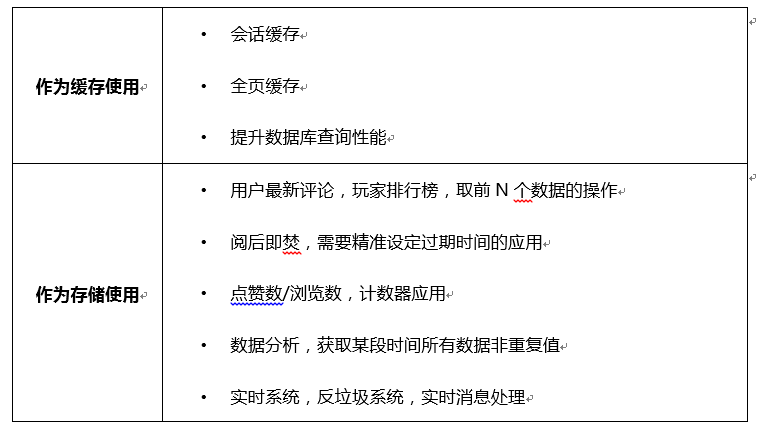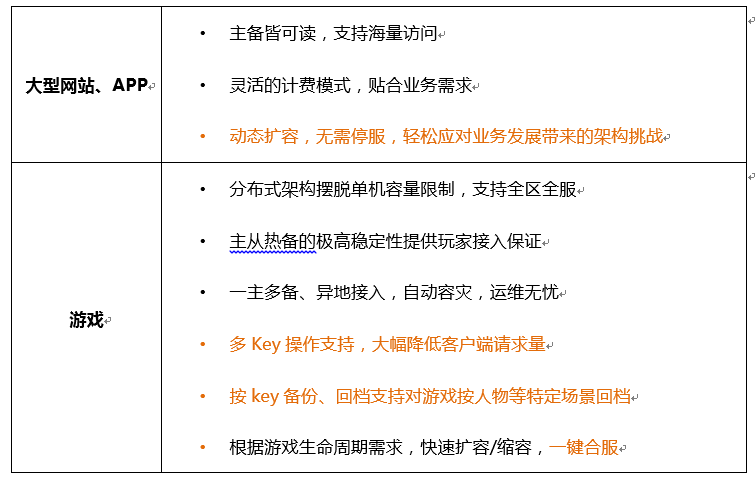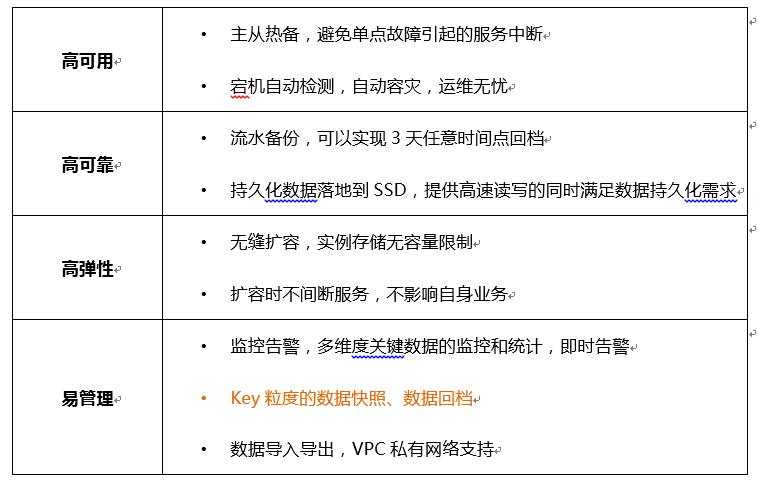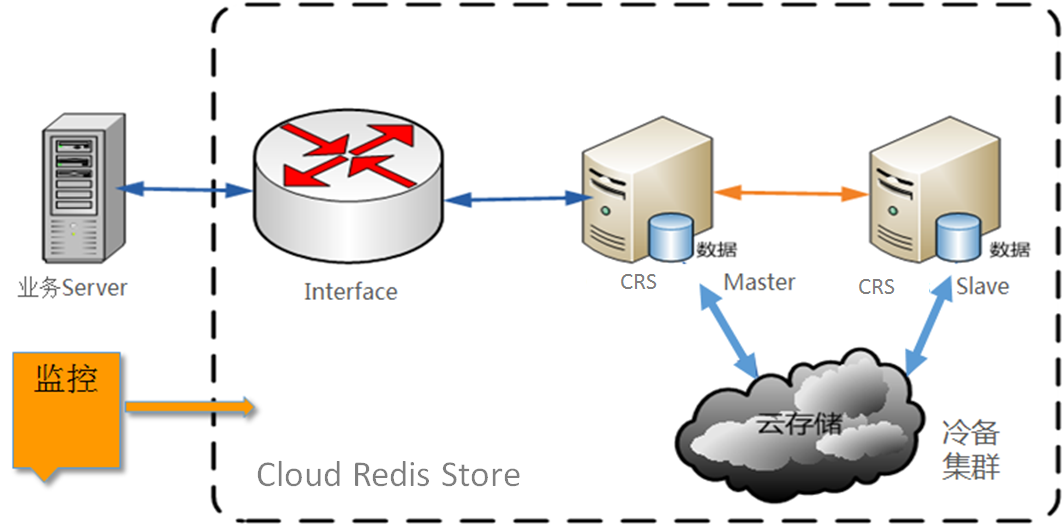SCWS 中文分词 php安装使用例子
今天发现一个很好用的中文分词工具。分享一下
CWS 是 Simple Chinese Word Segmentation 的首字母缩写(即:简易中文分词系统)。
这是一套基于词频词典的机械式中文分词引擎,它能将一整段的中文文本基本正确地切分成词。 词是中文的最小语素单位,但在书写时并不像英语会在词之间用空格分开, 所以如何准确并快速分词一直是中文分词的攻关难点。
SCWS 采用纯 C 语言开发,不依赖任何外部库函数,可直接使用动态链接库嵌入应用程序, 支持的中文编码包括 GBK、UTF-8 等。此外还提供了 PHP 扩展模块, 可在 PHP 中快速而方便地使用分词功能。
分词算法上并无太多创新成分,采用的是自己采集的词频词典,并辅以一定的专有名称,人名,地名, 数字年代等规则识别来达到基本分词,经小范围测试准确率在 90% ~ 95% 之间, 基本上能满足一些小型搜索引擎、关键字提取等场合运用。首次雏形版本发布于 2005 年底。
二、scws安装
# wget -c http://www.xunsearch.com/scws/down/scws-1.2.1.tar.bz2
# tar jxvf scws-1.2.1.tar.bz2
# cd scws-1.2.1
# ./configure --prefix=/usr/local/scws
# make && make install
三、scws的PHP扩展安装
# cd ./phpext
# phpize
# ./configure --with-php-config=/usr/local/php5410/bin/php-config
# make && make install
# echo "[scws]" >> /usr/local/php5410/etc/php.ini
# echo "extension = scws.so" >> /usr/local/php5410/etc/php.ini
# echo "scws.default.charset = utf-8" >> /usr/local/php5410/etc/php.ini
# echo "scws.default.fpath = /usr/local/scws/etc/" >> /usr/local/php5410/etc/php.ini
四、词库安装
# wget http://www.xunsearch.com/scws/down/scws-dict-chs-utf8.tar.bz2
# tar jxvf scws-dict-chs-utf8.tar.bz2 -C /usr/local/scws/etc/
# chown www:www /usr/local/scws/etc/dict.utf8.xdb
例子
<?php
header("Content-Type:text/html; charset=utf-8");
define('APP_ROOT', str_replace('\\', '/', dirname(__FILE__)));
$test = '真怕有一天我们再次成为交叉线,我想那时就再也不可能回归了,快乐永远是拿痛苦做代价,你现在多幸福,多快乐,你以后就会越伤心越难过,不想发生!';
function get_tags_arr($title)
{
require(APP_ROOT.'/pscws4.class.php');
$pscws = new PSCWS4();
$pscws->set_dict(APP_ROOT.'/scws/dict.utf8.xdb');
$pscws->set_rule(APP_ROOT.'/scws/rules.utf8.ini');
$pscws->set_ignore(true);
$pscws->send_text($title);
$words = $pscws->get_tops(5);
$tags = array();
foreach ($words as $val) {
$tags[] = $val['word'];
}
$pscws->close();
return $tags;
}
print_r(get_tags_arr($test));
function get_keywords_str($content){
require(APP_ROOT.'/phpanalysis.class.php');
PhpAnalysis::$loadInit = false;
$pa = new PhpAnalysis('utf-8', 'utf-8', false);
$pa->LoadDict();
$pa->SetSource($content);
$pa->StartAnalysis( false );
$tags = $pa->GetFinallyResult();
return $tags;
}
print(get_keywords_str($test));
这是一个Laravel框架运行nginx服务器的配置示例,Laravel框架版本5.2
server {
listen 80;
server_name localhost;
root /usr/share/nginx/html/tanteng.me/public;
index index.php index.html index.htm;
#charset koi8-r;
#access_log /var/log/nginx/log/host.access.log main;
location / {
try_files $uri $uri/ /index.php?$query_string;
}
#error_page 404 /404.html;
# redirect server error pages to the static page /50x.html
#
error_page 500 502 503 504 /50x.html;
location = /50x.html {
root /usr/share/nginx/html/tanteng.me/public;
}
# proxy the PHP scripts to Apache listening on 127.0.0.1:80
#
#location ~ \.php$ {
# proxy_pass http://127.0.0.1;
#}
# pass the PHP scripts to FastCGI server listening on 127.0.0.1:9000
#
location ~ \.php$ {
fastcgi_pass 127.0.0.1:9000;
fastcgi_index index.php;
fastcgi_param SCRIPT_FILENAME $document_root$fastcgi_script_name;
include fastcgi_params;
}
# deny access to .htaccess files, if Apache's document root
# concurs with nginx's one
#
location ~ /\.ht {
deny all;
}
}
运行在CentOS 7环境,Nginx版本1.8
一、什么是单例模式?
1、含义
作为对象的创建模式,单例模式确保某一个类只有一个实例,而且自行实例化并向整个系统全局地提供这个实例。它不会创建实例副本,而是会向单例类内部存储的实例返回一个引用。
2、单例模式的三个要点:
(1). 需要一个保存类的唯一实例的静态成员变量:
private static $_instance;
(2). 构造函数和克隆函数必须声明为私有的,防止外部程序new类从而失去单例模式的意义:
private function __construct()
{
$this->_db = pg_connect('xxxx');
}
private function __clone()
{
}//覆盖__clone()方法,禁止克隆
(3). 必须提供一个访问这个实例的公共的静态方法(通常为getInstance方法),从而返回唯一实例的一个引用
public static function getInstance()
{
if(! (self::$_instance instanceof self) )
{
self::$_instance = new self();
}
return self::$_instance;
}
二、为什么要使用单例模式?
多数人都是从单例模式的字面上的意思来理解它的用途, 认为这是对系统资源的节省, 可以避免重复实例化, 是一种"计划生育". 而PHP每次执行完页面都是会从内存中清理掉所有的资源. 因而PHP中的单例实际每次运行都是需要重新实例化的, 这样就失去了单例重复实例化的意义了. 单单从这个方面来说, PHP的单例的确有点让各位失望. 但是单例仅仅只有这个功能和应用吗? 答案是否定的,我们一起来看看。
php的应用主要在于数据库应用, 所以一个应用中会存在大量的数据库操作, 在使用面向对象的方式开发时(废话), 如果使用单例模式, 则可以避免大量的new 操作消耗的资源。
如果系统中需要有一个类来全局控制某些配置信息, 那么使用单例模式可以很方便的实现. 这个可以参看zend Framework的FrontController部分。
在一次页面请求中, 便于进行调试, 因为所有的代码(例如数据库操作类db)都集中在一个类中, 我们可以在类中设置钩子, 输出日志,从而避免到处var_dump, echo。
1、PHP缺点:
PHP语言是一种解释型的脚本语言,这种运行机制使得每个PHP页面被解释执行后,所有的相关资源都会被回收。也就是说,PHP在语言级别上没有办法让某个对象常驻内存,这和asp.net、Java等编译型是不同的,比如在Java中单例会一直存在于整个应用程序的生命周期里,变量是跨页面级的,真正可以做到这个实例在应用程序生命周期中的唯一性。然而在PHP中,所有的变量无论是全局变量还是类的静态成员,都是页面级的,每次页面被执行时,都会重新建立新的对象,都会在页面执行完毕后被清空,这样似乎PHP单例模式就没有什么意义了,所以PHP单例模式我觉得只是针对单次页面级请求时出现多个应用场景并需要共享同一对象资源时是非常有意义的。
2、单例模式在PHP中的应用场合:
(1)、应用程序与数据库交互
一个应用中会存在大量的数据库操作,比如过数据库句柄来连接数据库这一行为,使用单例模式可以避免大量的new操作,因为每一次new操作都会消耗内存资源和系统资源。
(2)、控制配置信息
如果系统中需要有一个类来全局控制某些配置信息, 那么使用单例模式可以很方便的实现.
三、如何实现单例模式?
1、普通的数据库访问例子:
<?php
......
//初始化一个数据库句柄
$db = new DB(...);
//添加用户信息
$db->addUserInfo(...);
......
//在函数中访问数据库,查找用户信息
function getUserInfo()
{
$db = new DB(...);//再次new 数据库类,和数据库建立连接
$db = query(....);//根据查询语句访问数据库
}
?>
2、应用单例模式对数据库进行操作:
<?php
class DB
{
private $_db;
private static $_instance;
private function __construct(...)
{
$this->_db = pg_connect(...);//postgrsql
}
private function __clone() {}; //覆盖__clone()方法,禁止克隆
public static function getInstance()
{
if(! (self::$_instance instanceof self) ) {
self::$_instance = new self();
}
return self::$_instance;
}
public function addUserInfo(...)
{
}
public function getUserInfo(...)
{
}
}
//test
$db = DB::getInstance();
$db->addUserInfo(...);
$db->getUserInfo(...);
?>下面的代码是PDO操作数据库类的一个封装,采用了单例模式:
<?php
/**
* MyPDO
*/
class MyPDO
{
protected static $_instance = null;
protected $dbName = '';
protected $dsn;
protected $dbh;
/**
* 构造
*
* @return MyPDO
*/
private function __construct($dbHost, $dbUser, $dbPasswd, $dbName, $dbCharset)
{
try {
$this->dsn = 'mysql:host='.$dbHost.';dbname='.$dbName;
$this->dbh = new PDO($this->dsn, $dbUser, $dbPasswd);
$this->dbh->exec('SET character_set_connection='.$dbCharset.', character_set_results='.$dbCharset.', character_set_client=binary');
} catch (PDOException $e) {
$this->outputError($e->getMessage());
}
}
/**
* 防止克隆
*
*/
private function __clone() {}
/**
* Singleton instance
*
* @return Object
*/
public static function getInstance($dbHost, $dbUser, $dbPasswd, $dbName, $dbCharset)
{
if (self::$_instance === null) {
self::$_instance = new self($dbHost, $dbUser, $dbPasswd, $dbName, $dbCharset);
}
return self::$_instance;
}
/**
* Query 查询
*
* @param String $strSql SQL语句
* @param String $queryMode 查询方式(All or Row)
* @param Boolean $debug
* @return Array
*/
public function query($strSql, $queryMode = 'All', $debug = false)
{
if ($debug === true) $this->debug($strSql);
$recordset = $this->dbh->query($strSql);
$this->getPDOError();
if ($recordset) {
$recordset->setFetchMode(PDO::FETCH_ASSOC);
if ($queryMode == 'All') {
$result = $recordset->fetchAll();
} elseif ($queryMode == 'Row') {
$result = $recordset->fetch();
}
} else {
$result = null;
}
return $result;
}
/**
* Update 更新
*
* @param String $table 表名
* @param Array $arrayDataValue 字段与值
* @param String $where 条件
* @param Boolean $debug
* @return Int
*/
public function update($table, $arrayDataValue, $where = '', $debug = false)
{
$this->checkFields($table, $arrayDataValue);
if ($where) {
$strSql = '';
foreach ($arrayDataValue as $key => $value) {
$strSql .= ", `$key`='$value'";
}
$strSql = substr($strSql, 1);
$strSql = "UPDATE `$table` SET $strSql WHERE $where";
} else {
$strSql = "REPLACE INTO `$table` (`".implode('`,`', array_keys($arrayDataValue))."`) VALUES ('".implode("','", $arrayDataValue)."')";
}
if ($debug === true) $this->debug($strSql);
$result = $this->dbh->exec($strSql);
$this->getPDOError();
return $result;
}
/**
* Insert 插入
*
* @param String $table 表名
* @param Array $arrayDataValue 字段与值
* @param Boolean $debug
* @return Int
*/
public function insert($table, $arrayDataValue, $debug = false)
{
$this->checkFields($table, $arrayDataValue);
$strSql = "INSERT INTO `$table` (`".implode('`,`', array_keys($arrayDataValue))."`) VALUES ('".implode("','", $arrayDataValue)."')";
if ($debug === true) $this->debug($strSql);
$result = $this->dbh->exec($strSql);
$this->getPDOError();
return $result;
}
/**
* Replace 覆盖方式插入
*
* @param String $table 表名
* @param Array $arrayDataValue 字段与值
* @param Boolean $debug
* @return Int
*/
public function replace($table, $arrayDataValue, $debug = false)
{
$this->checkFields($table, $arrayDataValue);
$strSql = "REPLACE INTO `$table`(`".implode('`,`', array_keys($arrayDataValue))."`) VALUES ('".implode("','", $arrayDataValue)."')";
if ($debug === true) $this->debug($strSql);
$result = $this->dbh->exec($strSql);
$this->getPDOError();
return $result;
}
/**
* Delete 删除
*
* @param String $table 表名
* @param String $where 条件
* @param Boolean $debug
* @return Int
*/
public function delete($table, $where = '', $debug = false)
{
if ($where == '') {
$this->outputError("'WHERE' is Null");
} else {
$strSql = "DELETE FROM `$table` WHERE $where";
if ($debug === true) $this->debug($strSql);
$result = $this->dbh->exec($strSql);
$this->getPDOError();
return $result;
}
}
/**
* execSql 执行SQL语句
*
* @param String $strSql
* @param Boolean $debug
* @return Int
*/
public function execSql($strSql, $debug = false)
{
if ($debug === true) $this->debug($strSql);
$result = $this->dbh->exec($strSql);
$this->getPDOError();
return $result;
}
/**
* 获取字段最大值
*
* @param string $table 表名
* @param string $field_name 字段名
* @param string $where 条件
*/
public function getMaxValue($table, $field_name, $where = '', $debug = false)
{
$strSql = "SELECT MAX(".$field_name.") AS MAX_VALUE FROM $table";
if ($where != '') $strSql .= " WHERE $where";
if ($debug === true) $this->debug($strSql);
$arrTemp = $this->query($strSql, 'Row');
$maxValue = $arrTemp["MAX_VALUE"];
if ($maxValue == "" || $maxValue == null) {
$maxValue = 0;
}
return $maxValue;
}
/**
* 获取指定列的数量
*
* @param string $table
* @param string $field_name
* @param string $where
* @param bool $debug
* @return int
*/
public function getCount($table, $field_name, $where = '', $debug = false)
{
$strSql = "SELECT COUNT($field_name) AS NUM FROM $table";
if ($where != '') $strSql .= " WHERE $where";
if ($debug === true) $this->debug($strSql);
$arrTemp = $this->query($strSql, 'Row');
return $arrTemp['NUM'];
}
/**
* 获取表引擎
*
* @param String $dbName 库名
* @param String $tableName 表名
* @param Boolean $debug
* @return String
*/
public function getTableEngine($dbName, $tableName)
{
$strSql = "SHOW TABLE STATUS FROM $dbName WHERE Name='".$tableName."'";
$arrayTableInfo = $this->query($strSql);
$this->getPDOError();
return $arrayTableInfo[0]['Engine'];
}
/**
* beginTransaction 事务开始
*/
private function beginTransaction()
{
$this->dbh->beginTransaction();
}
/**
* commit 事务提交
*/
private function commit()
{
$this->dbh->commit();
}
/**
* rollback 事务回滚
*/
private function rollback()
{
$this->dbh->rollback();
}
/**
* transaction 通过事务处理多条SQL语句
* 调用前需通过getTableEngine判断表引擎是否支持事务
*
* @param array $arraySql
* @return Boolean
*/
public function execTransaction($arraySql)
{
$retval = 1;
$this->beginTransaction();
foreach ($arraySql as $strSql) {
if ($this->execSql($strSql) == 0) $retval = 0;
}
if ($retval == 0) {
$this->rollback();
return false;
} else {
$this->commit();
return true;
}
}
/**
* checkFields 检查指定字段是否在指定数据表中存在
*
* @param String $table
* @param array $arrayField
*/
private function checkFields($table, $arrayFields)
{
$fields = $this->getFields($table);
foreach ($arrayFields as $key => $value) {
if (!in_array($key, $fields)) {
$this->outputError("Unknown column `$key` in field list.");
}
}
}
/**
* getFields 获取指定数据表中的全部字段名
*
* @param String $table 表名
* @return array
*/
private function getFields($table)
{
$fields = array();
$recordset = $this->dbh->query("SHOW COLUMNS FROM $table");
$this->getPDOError();
$recordset->setFetchMode(PDO::FETCH_ASSOC);
$result = $recordset->fetchAll();
foreach ($result as $rows) {
$fields[] = $rows['Field'];
}
return $fields;
}
/**
* getPDOError 捕获PDO错误信息
*/
private function getPDOError()
{
if ($this->dbh->errorCode() != '00000') {
$arrayError = $this->dbh->errorInfo();
$this->outputError($arrayError[2]);
}
}
/**
* debug
*
* @param mixed $debuginfo
*/
private function debug($debuginfo)
{
var_dump($debuginfo);
exit();
}
/**
* 输出错误信息
*
* @param String $strErrMsg
*/
private function outputError($strErrMsg)
{
throw new Exception('MySQL Error: '.$strErrMsg);
}
/**
* destruct 关闭数据库连接
*/
public function destruct()
{
$this->dbh = null;
}
}
?>
调用方法:
<?php
require 'MyPDO.class.php';
$db = MyPDO::getInstance('localhost', 'root', '123456', 'test', 'utf8');
$db->query("select count(*) frome table");
$db->destruct();
?>CRS可作为缓存使用,在会话缓存、全页缓存、提升数据库查询性能等场景都有显著的优越性;CRS还可作为Key-Value存储使用,其保存的数据具备高可靠性,可每日生成冷备和通过流水日志回档。在排行榜、计数器应用、实时系统、阅后即焚类需要精准设定过期时间的应用、反垃圾系统等场景下可大大提高效率。
云存储Redis的使用场景,应用场景,产品特点和架构介绍:
使用场景

应用场景

产品特点

架构介绍

PHP运行前必备:
使用客户端phpredis,下载和参考地址:https://github.com/phpredis/phpredis
【示例代码】
<?php
/**以下参数分别填写您的redis实例内网IP,端口号,实例id和密码*/
$host = "192.168.0.2";
$port = 6379;
$instanceid = "c532952f-55dc-4c22-a941-63057e560788";
$pwd = "1234567q";
$redis = new Redis();
//连接redis
if ($redis->connect($host, $port) == false) {
die($redis->getLastError());
}
//鉴权
if ($redis->auth($instanceid . ":" . $pwd) == false) {
die($redis->getLastError());
}
/**接下来可以愉快的开始操作redis实例,可以参考:https://github.com/phpredis/phpredis */
//设置key
if ($redis->set("redis", "piaoyi.org") == false) {
die($redis->getLastError());
}
echo "set key redis OK, value is: piaoyi.org\n";
//获取key
$value = $redis->get("redis");
echo "get key redis is:".$value."\n";
?>
一个使用redis实现积分排行榜的小例子:
//积分排行榜类
class Ranks {
const PREFIX = 'rank:';
protected $redis = null;
public function __construct( Redis $redis ) {
$this->redis = $redis;
}
public function addScores( $member, $scores, $date="" ) {
if ( $date=="" ) $key = self::PREFIX . date( 'Ymd' );
else $key = self::PREFIX . $date;
return $this->redis->zIncrBy( $key, $scores, $member );
}
function getOneDayRankings( $date, $start, $stop ) {
$key = self::PREFIX . $date;
return $this->redis->zRevRange( $key, $start, $stop, true );
}
protected function getMultiDaysRankings( $dates, $outKey, $start, $stop ) {
$keys = array_map( function( $date ) {
return self::PREFIX . $date;
}, $dates );
$weights = array_fill( 0, count( $keys ), 1 );
$this->redis->zUnion( $outKey, $keys, $weights );//合集,相同key会求和累加
return $this->redis->zRevRange( $outKey, $start, $stop, true );
}
public function getYesterdayTop10() {
$date = date('Ymd' , strtotime('-1 day'));
return $this->getOneDayRankings( $date, 0, 9 );
}
public static function getCurrentMonthDates() {
$BeginDate=date('Y-m-01', strtotime(date("Y-m-d"))); //当前月第1天
$curDate=(int)date('d', strtotime(date("Y-m-d")));
$dates = array();
for ( $day = 0; $day < $curDate; $day++ ) {
$dates[] = date('Ymd' , strtotime("$BeginDate +$day day"));
}
return $dates;
}
public function getCurrentMonthTop10() {
$dates = self::getCurrentMonthDates();
return $this->getMultiDaysRankings( $dates, 'rank:current_month', 0, 9 );
}
}
上面这个类使用:
//实例化
$rank = new Ranks( $redis );
$rank->addScores(1, 3, "20151106");
$rank->addScores(2, 2, "20151106");
$rank->addScores(3, 1, "20151106");
$rank->addScores(1, 1, "20151107");
$rank->addScores(2, 3, "20151107");
$rank->addScores(3, 2, "20151107");
print_r($rank->getYesterdayTop10());
print_r($rank->getCurrentMonthTop10());
print_r($rank->getOneDayRankings("20151106",0,-1));
print_r($rank->getOneDayRankings("20151107",0,-1));
一些支持的方法:
Connection
connect, open - Connect to a server
pconnect, popen - Connect to a server (persistent)
auth - Authenticate to the server
select - Change the selected database for the current connection
close - Close the connection
setOption - Set client option
getOption - Get client option
ping - Ping the server
echo - Echo the given string
Keys and Strings
Strings(字符串)
append - Append a value to a key
bitcount - Count set bits in a string
bitop - Perform bitwise operations between strings
decr, decrBy - Decrement the value of a key
get - Get the value of a key
getBit - Returns the bit value at offset in the string value stored at key
getRange - Get a substring of the string stored at a key
getSet - Set the string value of a key and return its old value
incr, incrBy - Increment the value of a key
incrByFloat - Increment the float value of a key by the given amount
mGet, getMultiple - Get the values of all the given keys
mSet, mSetNX - Set multiple keys to multiple values
set - Set the string value of a key
setBit - Sets or clears the bit at offset in the string value stored at key
setex, psetex - Set the value and expiration of a key
setnx - Set the value of a key, only if the key does not exist
setRange - Overwrite part of a string at key starting at the specified offset
strlen - Get the length of the value stored in a key
Keys(键)
del, delete - Delete a key
dump - Return a serialized version of the value stored at the specified key.
exists - Determine if a key exists
expire, setTimeout, pexpire - Set a key's time to live in seconds
expireAt, pexpireAt - Set the expiration for a key as a UNIX timestamp
keys, getKeys - Find all keys matching the given pattern
scan - Scan for keys in the keyspace (Redis >= 2.8.0)
migrate - Atomically transfer a key from a Redis instance to another one
move - Move a key to another database
object - Inspect the internals of Redis objects
persist - Remove the expiration from a key
randomKey - Return a random key from the keyspace
rename, renameKey - Rename a key
renameNx - Rename a key, only if the new key does not exist
type - Determine the type stored at key
sort - Sort the elements in a list, set or sorted set
ttl, pttl - Get the time to live for a key
restore - Create a key using the provided serialized value, previously obtained with dump.
Hashes(哈希表)
hDel - Delete one or more hash fields
hExists - Determine if a hash field exists
hGet - Get the value of a hash field
hGetAll - Get all the fields and values in a hash
hIncrBy - Increment the integer value of a hash field by the given number
hIncrByFloat - Increment the float value of a hash field by the given amount
hKeys - Get all the fields in a hash
hLen - Get the number of fields in a hash
hMGet - Get the values of all the given hash fields
hMSet - Set multiple hash fields to multiple values
hSet - Set the string value of a hash field
hSetNx - Set the value of a hash field, only if the field does not exist
hVals - Get all the values in a hash
hScan - Scan a hash key for members
Lists(列表)
blPop, brPop - Remove and get the first/last element in a list
brpoplpush - Pop a value from a list, push it to another list and return it
lIndex, lGet - Get an element from a list by its index
lInsert - Insert an element before or after another element in a list
lLen, lSize - Get the length/size of a list
lPop - Remove and get the first element in a list
lPush - Prepend one or multiple values to a list
lPushx - Prepend a value to a list, only if the list exists
lRange, lGetRange - Get a range of elements from a list
lRem, lRemove - Remove elements from a list
lSet - Set the value of an element in a list by its index
lTrim, listTrim - Trim a list to the specified range
rPop - Remove and get the last element in a list
rpoplpush - Remove the last element in a list, append it to another list and return it (redis >= 1.1)
rPush - Append one or multiple values to a list
rPushx - Append a value to a list, only if the list exists
Sets(集合)
sAdd - Add one or more members to a set
sCard, sSize - Get the number of members in a set
sDiff - Subtract multiple sets
sDiffStore - Subtract multiple sets and store the resulting set in a key
sInter - Intersect multiple sets
sInterStore - Intersect multiple sets and store the resulting set in a key
sIsMember, sContains - Determine if a given value is a member of a set
sMembers, sGetMembers - Get all the members in a set
sMove - Move a member from one set to another
sPop - Remove and return a random member from a set
sRandMember - Get one or multiple random members from a set
sRem, sRemove - Remove one or more members from a set
sUnion - Add multiple sets
sUnionStore - Add multiple sets and store the resulting set in a key
sScan - Scan a set for members
Sorted sets(有序集合)
zAdd - Add one or more members to a sorted set or update its score if it already exists
zCard, zSize - Get the number of members in a sorted set
zCount - Count the members in a sorted set with scores within the given values
zIncrBy - Increment the score of a member in a sorted set
zInter - Intersect multiple sorted sets and store the resulting sorted set in a new key
zRange - Return a range of members in a sorted set, by index
zRangeByScore, zRevRangeByScore - Return a range of members in a sorted set, by score
zRangeByLex - Return a lexigraphical range from members that share the same score
zRank, zRevRank - Determine the index of a member in a sorted set
zRem, zDelete - Remove one or more members from a sorted set
zRemRangeByRank, zDeleteRangeByRank - Remove all members in a sorted set within the given indexes
zRemRangeByScore, zDeleteRangeByScore - Remove all members in a sorted set within the given scores
zRevRange - Return a range of members in a sorted set, by index, with scores ordered from high to low
zScore - Get the score associated with the given member in a sorted set
zUnion - Add multiple sorted sets and store the resulting sorted set in a new key
zScan - Scan a sorted set for members
Transactions(事务)
multi, exec, discard - Enter and exit transactional mode
watch, unwatch - Watches a key for modifications by another client.
Server(服务器端命令)
bgrewriteaof - Asynchronously rewrite the append-only file
bgsave - Asynchronously save the dataset to disk (in background)
config - Get or Set the Redis server configuration parameters
dbSize - Return the number of keys in selected database
flushAll - Remove all keys from all databases
flushDB - Remove all keys from the current database
info - Get information and statistics about the server
lastSave - Get the timestamp of the last disk save
resetStat - Reset the stats returned by info method.
save - Synchronously save the dataset to disk (wait to complete)
slaveof - Make the server a slave of another instance, or promote it to master
time - Return the current server time
slowlog - Access the Redis slowlog entries
使用 Redis 实现排行榜功能
排行榜功能是一个很普遍的需求。使用 Redis 中有序集合的特性来实现排行榜是又好又快的选择。
一般排行榜都是有实效性的,比如“用户积分榜”。如果没有实效性一直按照总榜来排,可能榜首总是几个老用户,对于新用户来说,那真是太令人沮丧了。
首先,来个“今日积分榜”吧,排序规则是今日用户新增积分从多到少。
那么用户增加积分时,都操作一下记录当天积分增加的有序集合。
假设今天是 2015 年 04 月 01 日,UID 为 1 的用户因为某个操作,增加了 5 个积分。
Redis 命令如下:
ZINCRBY rank:20150401 5 1
假设还有其他几个用户也增加了积分:
ZINCRBY rank:20150401 1 2
ZINCRBY rank:20150401 10 3
看看现在有序集合 rank:20150401 中的数据(withscores 参数可以附带获取元素的 score):
ZRANGE rank:20150401 0 -1 withscores
1) "2"
2) "1"
3) "1"
4) "5"
5) "3"
6) "10"
按照分数从高到低,获取 top10:
ZREVRANGE rank:20150401 0 9 withscores
1) "3"
2) "10"
3) "1"
4) "5"
5) "2"
6) "1"
因为只有三个元素,所以就查询出了这些数据。
如果每天记录当天的积分排行榜,那么其他花样百出的榜单也就简单了。
比如“昨日积分榜”:
ZREVRANGE rank:20150331 0 9 withscores
利用并集实现多天的积分总和,实现“上周积分榜”:
ZUNIONSTORE rank:last_week 7 rank:20150323 rank:20150324 rank:20150325 rank:20150326 rank:20150327 rank:20150328 rank:20150329 WEIGHTS 1 1 1 1 1 1 1
这样就将 7 天的积分记录合并到有序集合 rank:last_week 中了。权重因子 WEIGHTS 如果不给,默认就是 1。为了不隐藏细节,特意写出。
那么查询上周积分榜 Top10 的信息就是:
ZREVRANGE rank:last_week 0 9 withscores
“月度榜”、“季度榜”、“年度榜”等等就以此类推。
下面给出一个 PHP 版的简单实现。使用 Redis 依赖于 PHP 扩展 PhpRedis,代码还依赖于 Carbon 库,用于处理时间。代码量很少,所以就不敲注释了。
<?php
namespace Blog\Redis;
use \Redis;
use Carbon\Carbon;
class Ranks {
const PREFIX = 'rank:';
protected $redis = null;
public function __construct(Redis $redis) {
$this->redis = $redis;
}
public function addScores($member, $scores) {
$key = self::PREFIX . date('Ymd');
return $this->redis->zIncrBy($key, $scores, $member);
}
protected function getOneDayRankings($date, $start, $stop) {
$key = self::PREFIX . $date;
return $this->redis->zRevRange($key, $start, $stop, true);
}
protected function getMultiDaysRankings($dates, $outKey, $start, $stop) {
$keys = array_map(function($date) {
return self::PREFIX . $date;
}, $dates);
$weights = array_fill(0, count($keys), 1);
$this->redis->zUnion($outKey, $keys, $weights);
return $this->redis->zRevRange($outKey, $start, $stop, true);
}
public function getYesterdayTop10() {
$date = Carbon::now()->subDays(1)->format('Ymd');
return $this->getOneDayRankings($date, 0, 9);
}
public static function getCurrentMonthDates() {
$dt = Carbon::now();
$days = $dt->daysInMonth;
$dates = array();
for ($day = 1; $day <= $days; $day++) {
$dt->day = $day;
$dates[] = $dt->format('Ymd');
}
return $dates;
}
public function getCurrentMonthTop10() {
$dates = self::getCurrentMonthDates();
return $this->getMultiDaysRankings($dates, 'rank:current_month', 0, 9);
}
}
最近做一个php项目的时候,遇到一个问题。
功能:使用phpexcel导出数据。
问题描述:导出身份证后四位是0000
这是因为在excel中如果在一个默认的格中输入或复制超长数字字符串,它会显示为科学计算法。
方法一:设置单元格为文本
$objPHPExcel = new PHPExcel();
$objPHPExcel->setActiveSheetIndex(0);
$objPHPExcel->getActiveSheet()->setTitle('Simple');
//设置A3单元格为文本
$objPHPExcel->getActiveSheet()->getStyle('A3')->getNumberFormat()
->setFormatCode(PHPExcel_Style_NumberFormat::FORMAT_TEXT);
//也可以设置整行或整列的style
/*
//E 列为文本
$objPHPExcel->getActiveSheet()->getStyle('E')->getNumberFormat()
->setFormatCode(PHPExcel_Style_NumberFormat::FORMAT_TEXT);
//第三行为文本
$objPHPExcel->getActiveSheet()->getStyle('3')->getNumberFormat()
->setFormatCode(PHPExcel_Style_NumberFormat::FORMAT_TEXT);
*/
更多的格式可以在PHPExcel/Style/NumberFormat.php中找到。
注意:上述的设置对长数字字符串还是以文本方式来显示科学计数法的结果。
方法二:在设置值的时候显示的指定数据类型
$objPHPExcel = new PHPExcel();
$objPHPExcel->setActiveSheetIndex(0);
$objPHPExcel->getActiveSheet()->setTitle('Simple');
$objPHPExcel->getActiveSheet()->setCellValueExplicit('D1',123456789033, PHPExcel_Cell_DataType::TYPE_STRING);
方法三:在数字字符串前加一个空格使之成为字符串
$objPHPExcel = new PHPExcel();
$objPHPExcel->setActiveSheetIndex(0);
$objPHPExcel->getActiveSheet()->setTitle('Simple');
$objPHPExcel->getActiveSheet()->setCellValue('D1', ' ' . 123456789033);
推荐使用第二、三种,第一种没有根本解决问题。
相关文章
js URLdecode()与urlencode方法支持中文解码
下面来介绍在js中来利用urlencode对中文编码与接受到数据后利用URLdecode()对编码进行解码,有需要学习的机友可参考参考。 代码如下 复制代码 ...2016-09-20- 有时为了网站安全和版权问题,会对自己写的php源码进行加密,在php加密技术上最常用的是zend公司的zend guard 加密软件,现在我们来图文讲解一下。 下面就简单说说如何...2016-11-25
- ps软件是现在很多人都会使用到的,HSL面板在ps软件中又有着非常独特的作用。这次文章就给大家介绍下ps怎么使用HSL面板,还不知道使用方法的下面一起来看看。  ...2017-07-06
- 许多的朋友对于Plesk控制面板应用不是非常的了解特别是英文版的Plesk控制面板,在这里小编整理了一些关于Plesk控制面板常用的使用方案整理,具体如下。 本文基于Linu...2016-10-10
使用insertAfter()方法在现有元素后添加一个新元素
复制代码 代码如下: //在现有元素后添加一个新元素 function insertAfter(newElement, targetElement){ var parent = targetElement.parentNode; if (parent.lastChild == targetElement){ parent.appendChild(newEl...2014-05-31- 大概有如下步骤 新建项目Bejs 新建文件package.json 新建文件Gruntfile.js 命令行执行grunt任务 一、新建项目Bejs源码放在src下,该目录有两个js文件,selector.js和ajax.js。编译后代码放在dest,这个grunt会...2014-06-07
使用percona-toolkit操作MySQL的实用命令小结
1.pt-archiver 功能介绍: 将mysql数据库中表的记录归档到另外一个表或者文件 用法介绍: pt-archiver [OPTION...] --source DSN --where WHERE 这个工具只是归档旧的数据,不会对线上数据的OLTP查询造成太大影响,你可以将...2015-11-24如何使用php脚本给html中引用的js和css路径打上版本号
在搜索引擎中搜索关键字.htaccess 缓存,你可以搜索到很多关于设置网站文件缓存的教程,通过设置可以将css、js等不太经常更新的文件缓存在浏览器端,这样访客每次访问你的网站的时候,浏览器就可以从浏览器的缓存中获取css、...2015-11-24jQuery 1.9使用$.support替代$.browser的使用方法
jQuery 从 1.9 版开始,移除了 $.browser 和 $.browser.version , 取而代之的是 $.support 。 在更新的 2.0 版本中,将不再支持 IE 6/7/8。 以后,如果用户需要支持 IE 6/7/8,只能使用 jQuery 1.9。 如果要全面支持 IE,并混合...2014-05-31关于Mysql中文乱码问题该如何解决(乱码问题完美解决方案)
最近两天做项目总是被乱码问题困扰着,这不刚把mysql中文乱码问题解决了,下面小编把我的解决方案分享给大家,供大家参考,也方便以后自己查阅。首先:用show variables like “%colla%”;show varables like “%char%”;这两条...2015-11-24安装和使用percona-toolkit来辅助操作MySQL的基本教程
一、percona-toolkit简介 percona-toolkit是一组高级命令行工具的集合,用来执行各种通过手工执行非常复杂和麻烦的mysql和系统任务,这些任务包括: 检查master和slave数据的一致性 有效地对记录进行归档 查找重复的索...2015-11-24- C#注释的一些使用方法浅谈,需要的朋友可以参考一下...2020-06-25
- 这篇文章主要介绍了C#读取中文文件出现乱码的解决方法,涉及C#中文编码的操作技巧,非常具有实用价值,需要的朋友可以参考下...2020-06-25
- 一、下载 mysqlsla [root@localhost tmp]# wget http://hackmysql.com/scripts/mysqlsla-2.03.tar.gz--19:45:45-- http://hackmysql.com/scripts/mysqlsla-2.03.tar.gzResolving hackmysql.com... 64.13.232.157Conn...2015-11-24
- 目前,JSON已经成为最流行的数据交换格式之一,各大网站的API几乎都支持它。我写过一篇《数据类型和JSON格式》,探讨它的设计思想。今天,我想总结一下PHP语言对它的支持,这是开发互联网应用程序(特别是编写API)必须了解的知识...2015-10-30
- 无限级分类在开发中经常使用,例如:部门结构、文章分类。无限级分类的难点在于“输出”和“查询”,例如 将文章分类输出为<ul>列表形式; 查找分类A下面所有分类包含的文章。1.实现原理 几种常见的实现方法,各有利弊。其中...2015-10-23
- 在debian环境下,彻底解决mysql无法插入和显示中文的问题Linux下Mysql插入中文显示乱码解决方案mysql -uroot -p 回车输入密码进入mysql查看状态如下:默认的是客户端和服务器都用了latin1,所以会乱码。解决方案:mysql>use...2013-10-04
- php类的使用实例教程 <?php /** * Class program for yinghua05-2 * designer :songsong */ class Template { var $tpl_vars; var $tpl_path; var $_deb...2016-11-25
- 一.mysql默认不支持中文,它的server和db默认是latin1编码.所以我们要将其改变为utf-8编码,因为utf-8包含了地球上大部分语言的二进制编码 1.关闭mysql服务 sudo /etc/init.d/mysql stop 2.修改mysql配置文件 mysql配...2015-10-21
- 我们自己鼓捣mysql时,总免不了会遇到这个问题:插入中文字符出现乱码,虽然这是运维先给配好的环境,但是在自己机子上玩的时候咧,总得知道个一二吧,不然以后如何优雅的吹牛B。...2015-03-15
